Revision Rhinoplasty Gallery
Revision Rhinoplasty Gallery
Back To GalleriesRevision Rhinoplasty 01
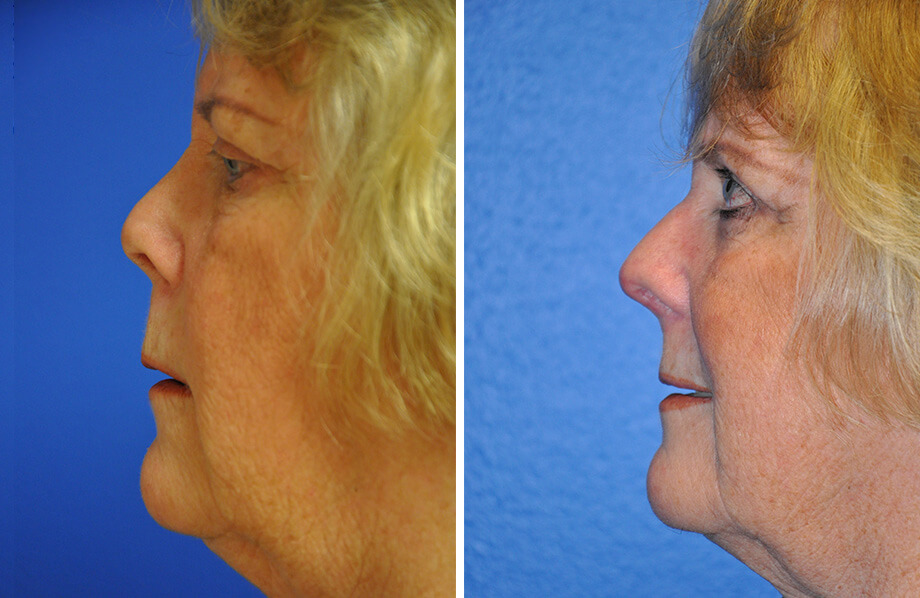
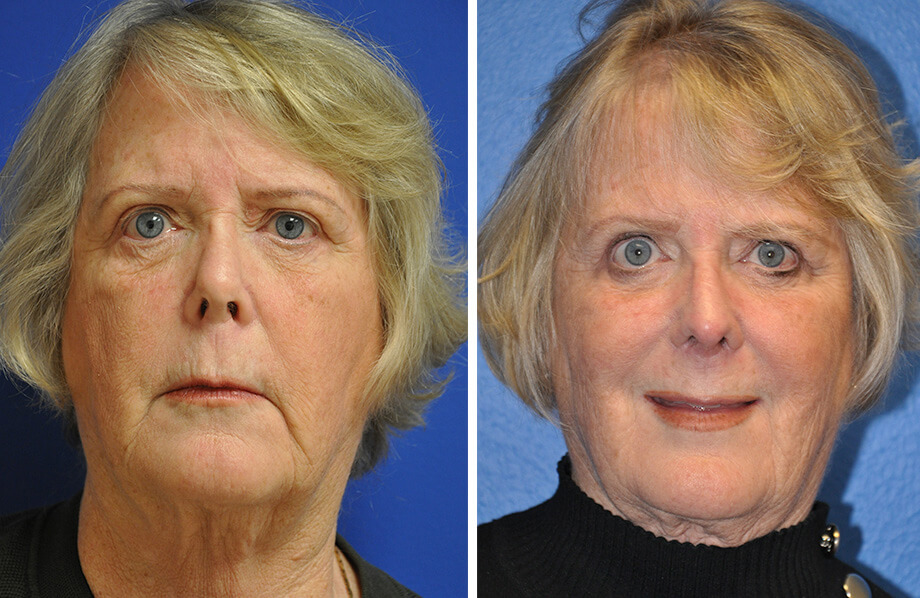
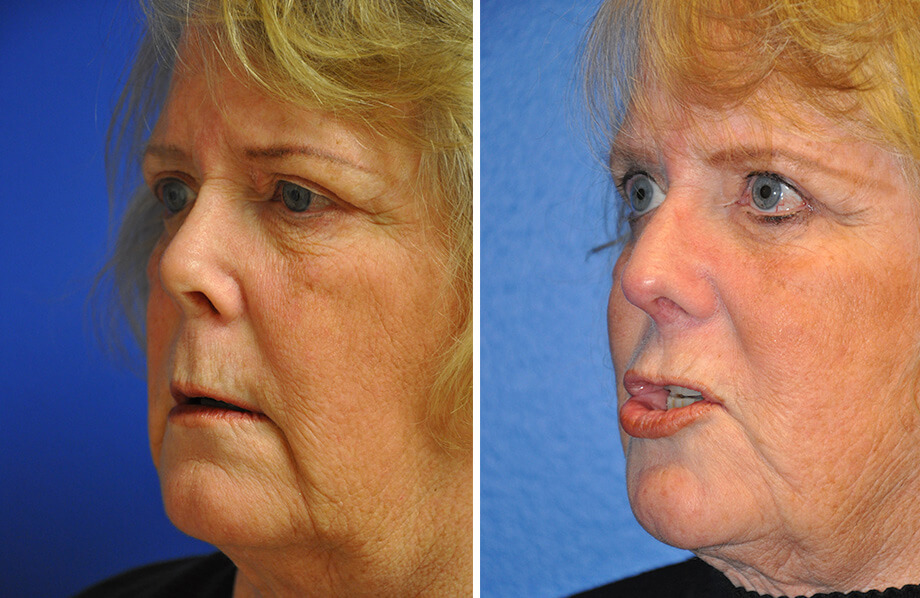
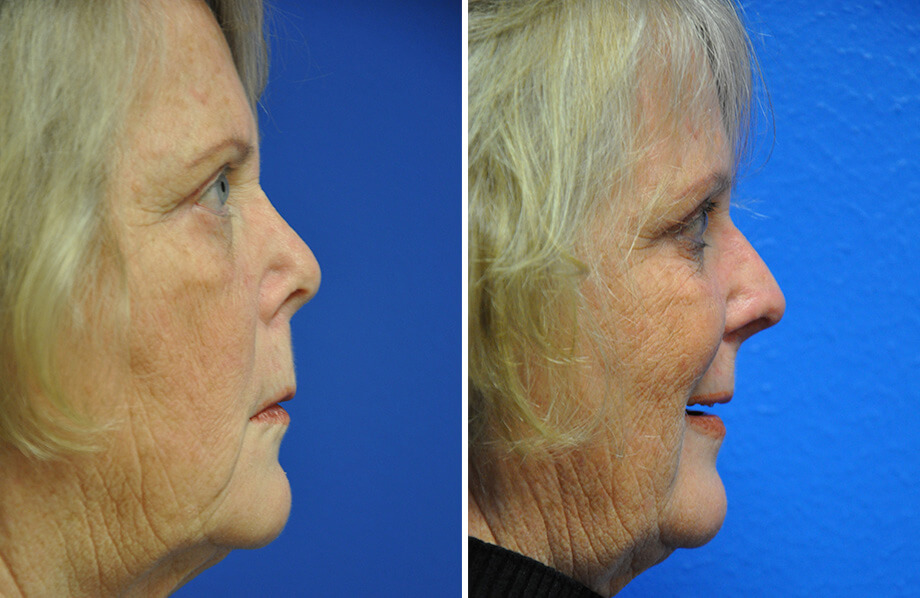
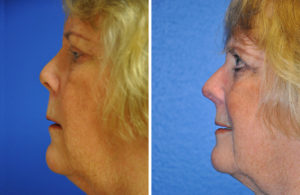
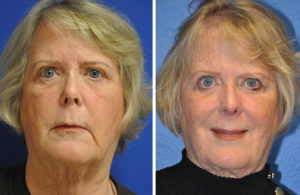
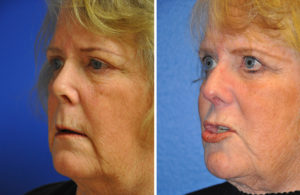
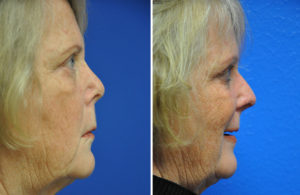
Description:
Description:
Technique: Open Revision Rhinoplasty with Costal Cartilage Grafts
Graft Types: Bilateral Spreader, Columellar Strut, Bilateral Alar Rim, Dorsal Onlay
Graft Source: Costal (Rib) Cartilage
Patient Story
This patient is a retired woman currently living in Georgetown, Texas who was referred to Dr. Weinfeld by another Plastic Surgeon in Round Rock for consideration for Revision Rhinoplasty. This patient suffered significant nasal trauma with a severe nasal fracture (broken nose) in her late teen years. This event had a significant negative impact on her breathing and on the appearance of her nose. In here early twenties she underwent a rhinoplasty which she states worsened her nose leaving her with very small nostrils that are difficult to pass air through, a very short nose, and an over rotated tip. She desired a revision rhinoplasty to improve the appearance and function of her nose. This was a very emotional issue for her and in particular she stated that she wanted her nose to have the appearance that it did prior to the injury and the first rhinoplasty. In particular she wanted a slight convexity to the dorsum (i.e. a slight hump) which was consistent with the character of her nose as she remembered it. She underwent the complex revision rhinoplasty using rib cartilage some of which was fashioned into a dorsal onlay graft which was essential in the process of restoring dorsal contour and nasal length. She has been very happy with the transformation in the appearance of her nose and its function. She is now considering having Dr. Weinfeld perform a facelift.
Revision Rhinoplasty 02
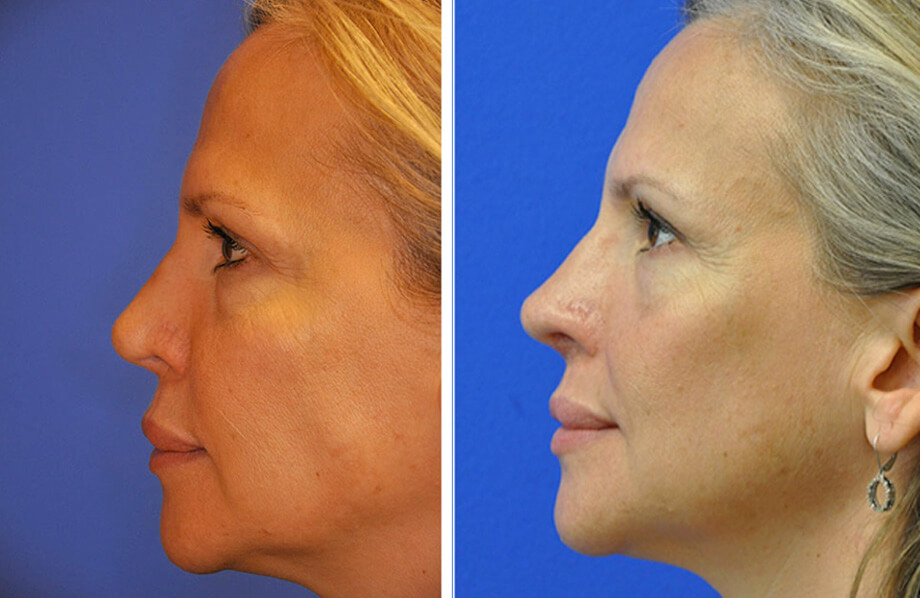
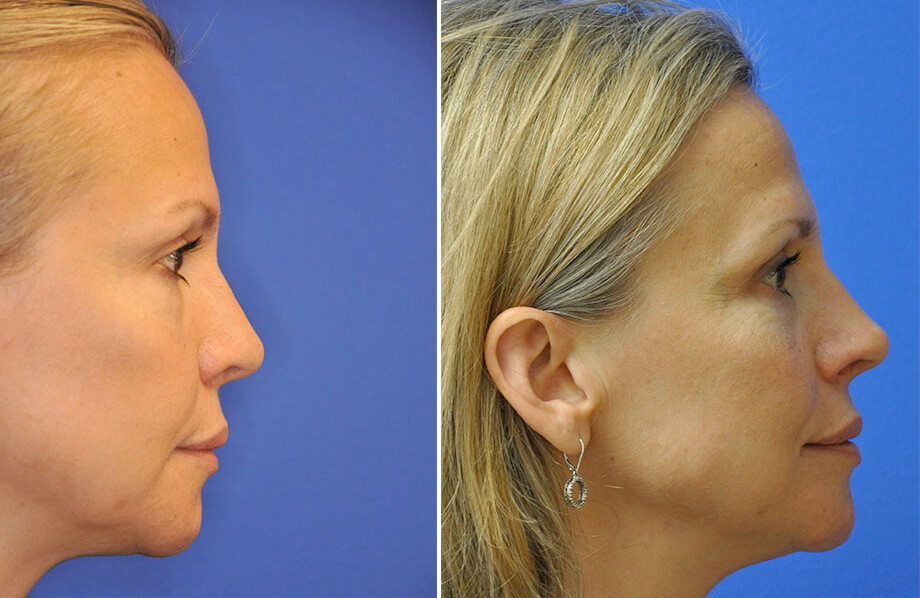
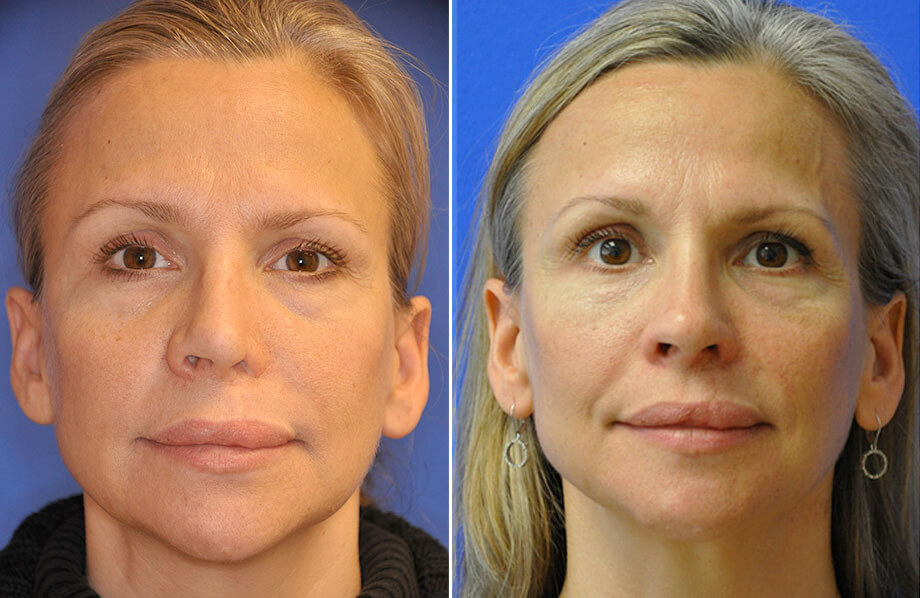
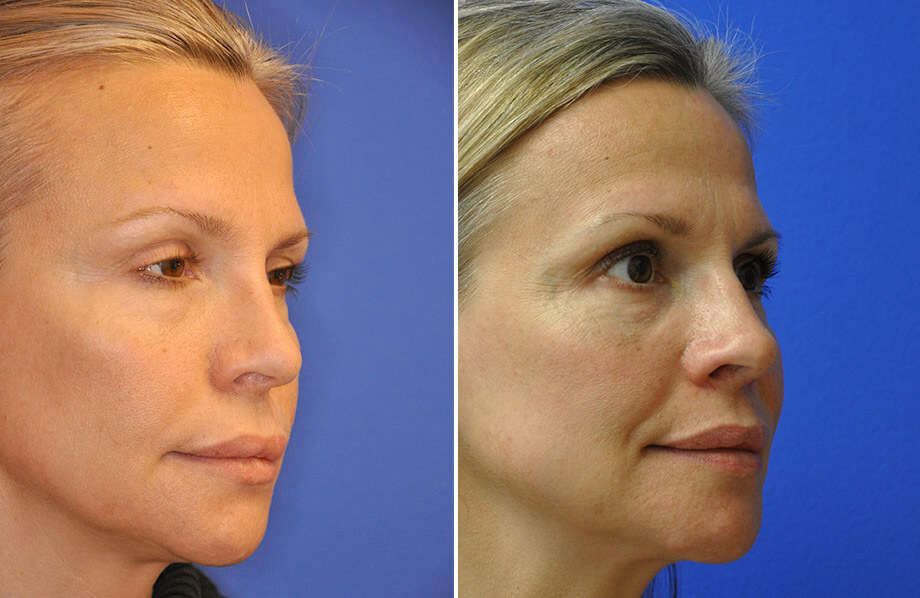
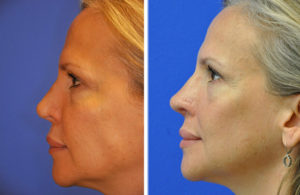
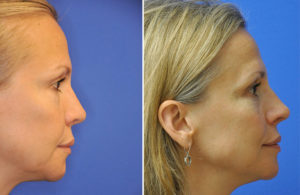
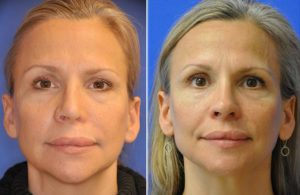
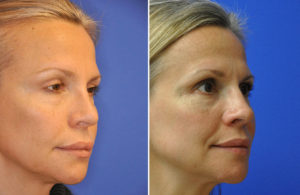
Description:
Description:
Special Note: Cleft Rhinoplasty
Technique:
Stage 1 – Iliac Crest Bone Graft to Pyriform Aperture and Skin Graft to lining of Left Ala (nostril)
Grafts – Pyriform Aperture, Alar Lining
Source – Iliac Crest
Stage 2 – Revision Rhinoplasty with Costal (Rib) Graft
Graft Types – Bilateral Spreader, Columellar Strut , Lower Lateral Crus Batten, Bilateral Alar Rim
Graft Source – Costal Cartilage (Rib)
Patient Story
This patient is a mid-Forties school teacher from Austin Texas who was referred to Dr. Weinfeld by an ENT colleague who refers Dr. Weinfeld patients with complex nasal breathing problems and rhinoplasty challenges. She had difficulty breasting due to collapse of the left side of her nose and septal deviation and desired improvement in the appearance. Her case was complex due to the face that she had a nasal deformity related to her past history of cleft lip and had a prior rhinoplasty by another Plastic Surgeon. Owing to his experience in advanced pediatric and adolescent cleft nose surgery at Dell Children’s Medical Center, Dr. Weinfeld felt that the best a way to achieve the patient’s goals would involve a two stage approach. In the first stage an iliac crest bone graft placed at the left side of the pyriform aperture was used to support the left ala bringing it more forward and a skin graft was placed in the left ala lining to help release the scarred and contracted tissues. In the second stage the patient’s rib own cartilage was used in an open revision rhinoplasty to rebuild the structure of the nose improving the function and appearance. Of special note to restore more normal contours to the cleft (left) side a lower lateral crus batten graft constructed from rib cartilage was used to strengthen the native cartilage that was abnormal due to the cleft and damaged due to the prior rhinoplasty. She has been very happy with her results.
Revision Rhinoplasty 03
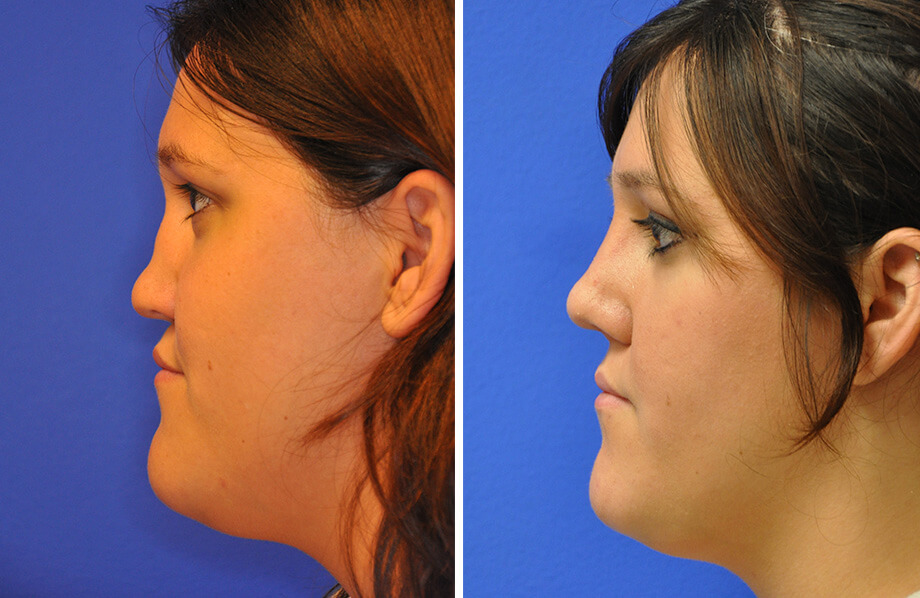
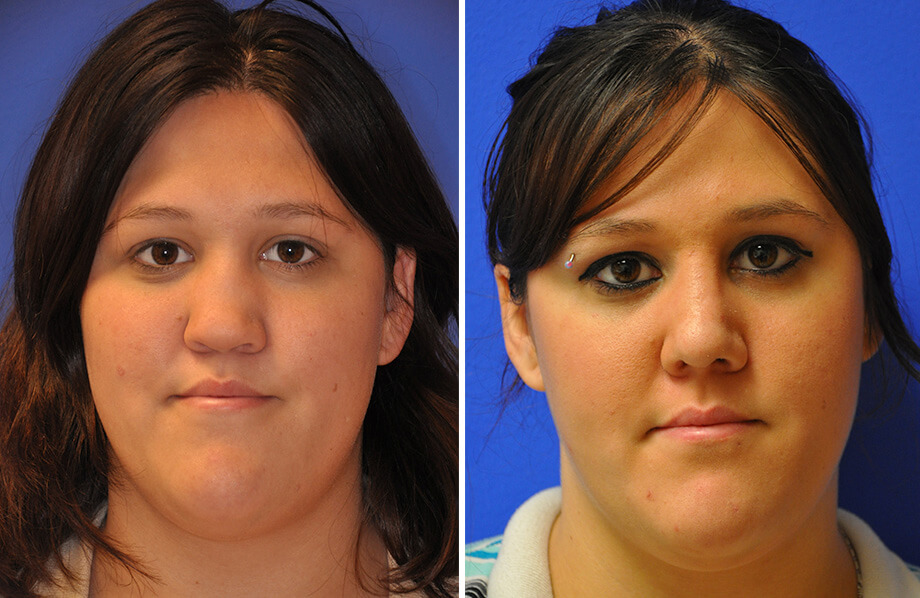
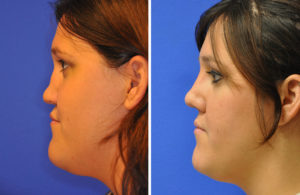
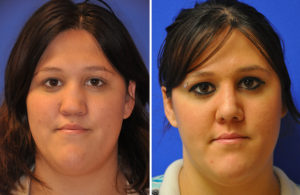
Description:
Description:
Technique: Open Revision / Tertiary Rhinoplasty (3rd)
Graft Types: Bilateral Spreader, Columellar Strut, Bilateral Alar Rim, Dorsal Onlay
Graft Source: Residual Septal Cartilage, Costal (Rib) Cartilage
Patient Story:
This patient is women in her mid-Twenties who suffered significant facial trauma the age of 5 years old when she fell face first only a bleacher seat. She had undergone a rhinoplasty to try to improve hear breathing in her pre-teen years and then a second rhinoplasty in her teenage years to improve her shape. Both of her surgeries were performed in Austin by a different Facial Plastic Surgeon. She was referred to Dr. Weinfeld by her primary care Doctor to discuss a tertiary (3rd) rhinoplasty to improve her breathing and appearance. She underwent a complex revision rhinoplasty with grafts from her own rib cartilage. Dr. Weinfeld believes a patient’s own rib is one of the best graft materials for revision rhinoplasty because of its long term durability. Some patients are initially apprehensive but later comment on the fact that the procedure is associated with much less discomfort than they initially expected. This procedure improved nasal length and projection in addition to refining shape, especially at the tip. Of special note is the use of the dorsal onlay gaft to restore dorsal projection and improve nasal length.
Revision Rhinoplasty 04
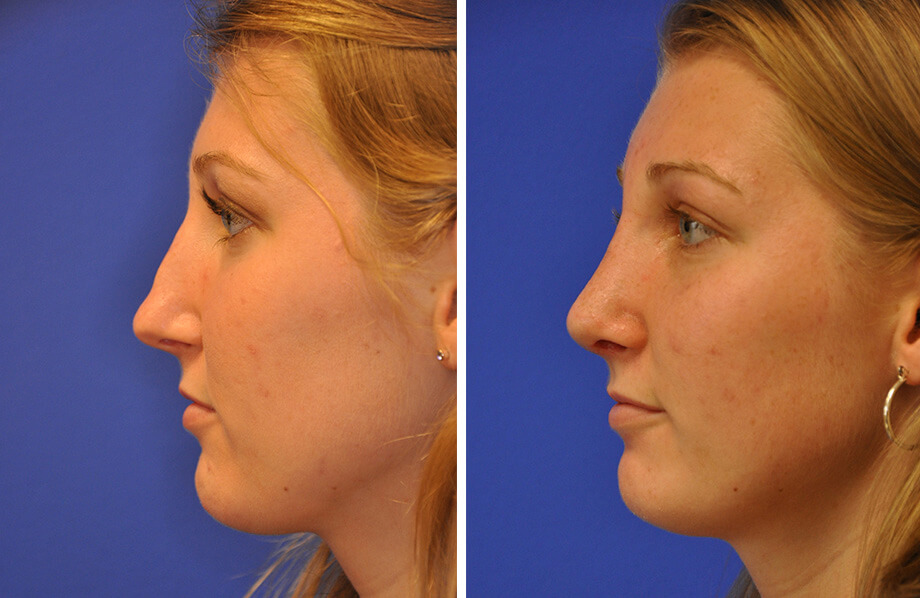
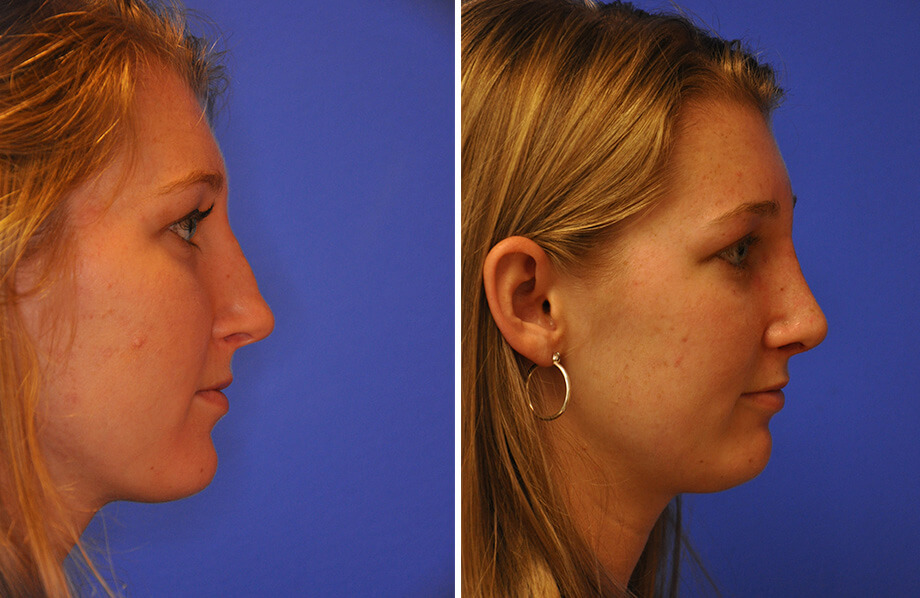
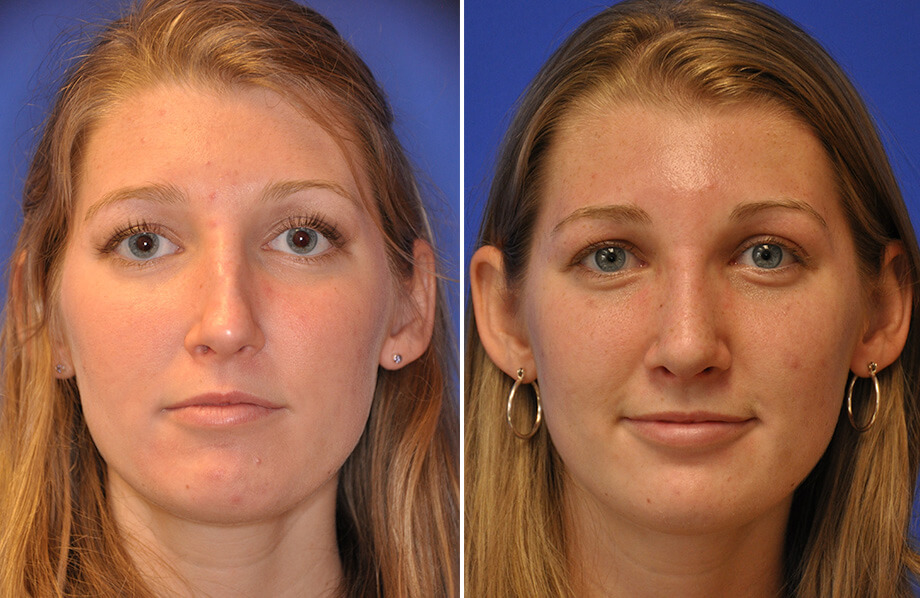
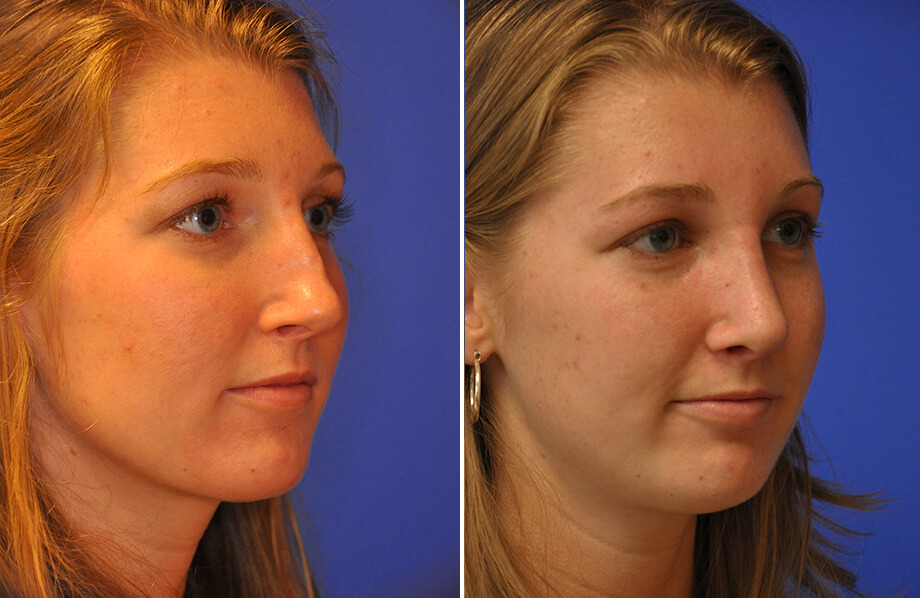
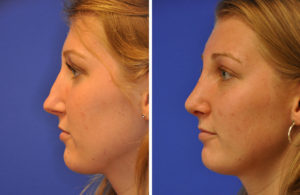
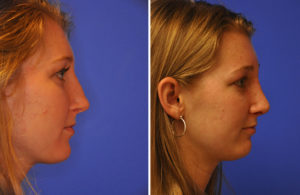
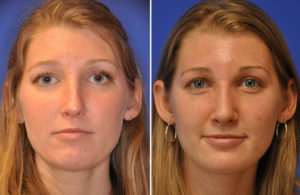
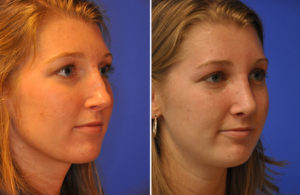
Description:
Description:
Technique: Open Revision / Secondary Rhinoplasty
Graft Types: Bilateral Spreader, Columellar Strut, Sub-Domal, Bilateral Alar Rim
Graft Source: Residual Septal Cartilage, Costal (Rib) Cartilage
Patient Story:
This patient had previously undergone a closed rhinoplasty (“nose job”) in conjunction with septoplasty performed by a Facial Plastic Surgeon in Austin, Texas. The intent of the initial surgery was to treat a dorsal hump. Unfortunately, the surgery created significant dorsal contour irregularities. Based on an internet research her mother identified Dr. Weinfeld as a Plastic Surgeon in Central Texas with interest and experience with secondary rhinoplasty. She visited Dr. Weinfeld in his Austin office where they discussed revision rhinoplasty options. The patient’s goal was to have a smooth and straight dorsum, improved dorsal aesthetic lines, and tip refinement. She underwent an open revision rhinoplasty. Due to the fact that she had already had a septoplasty she only had enough cartilage to use for the columellar strut. Thus, costal cartilage was used for the remainder of the grafts. The incision was placed in the inframammary crease and was small so the resulting scar was very difficult to see. The patient was very happy with her results and subsequently her sister has elected to undergo a primary rhinoplasty with Dr. Weinfeld.
Revision Rhinoplasty 05
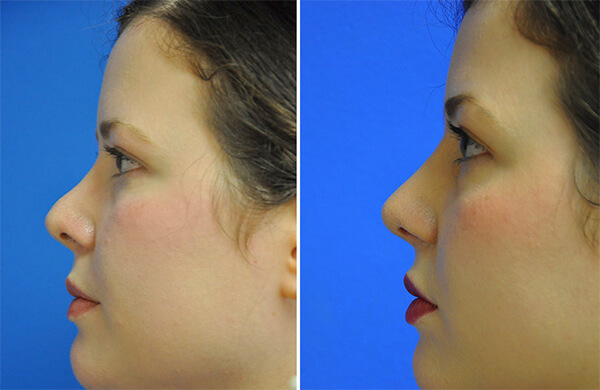
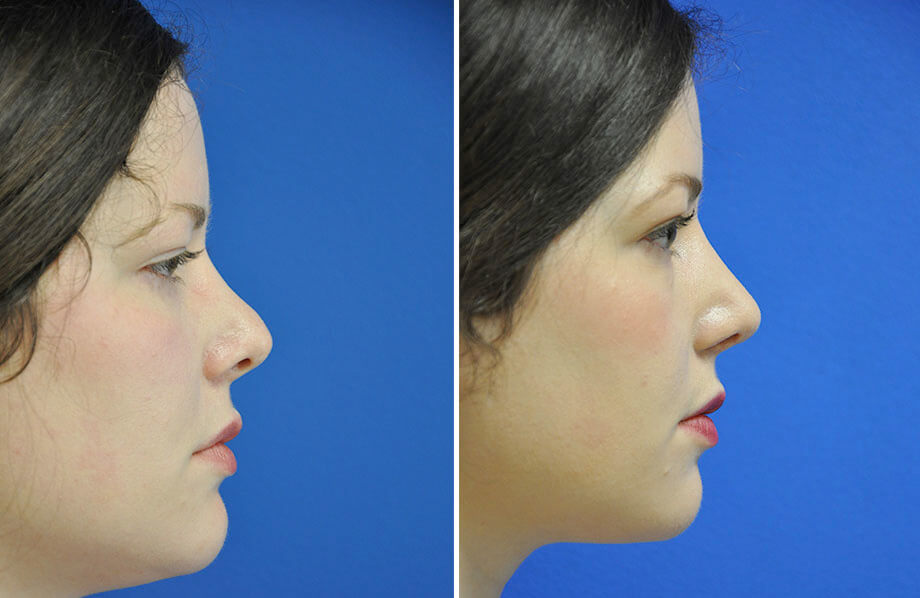
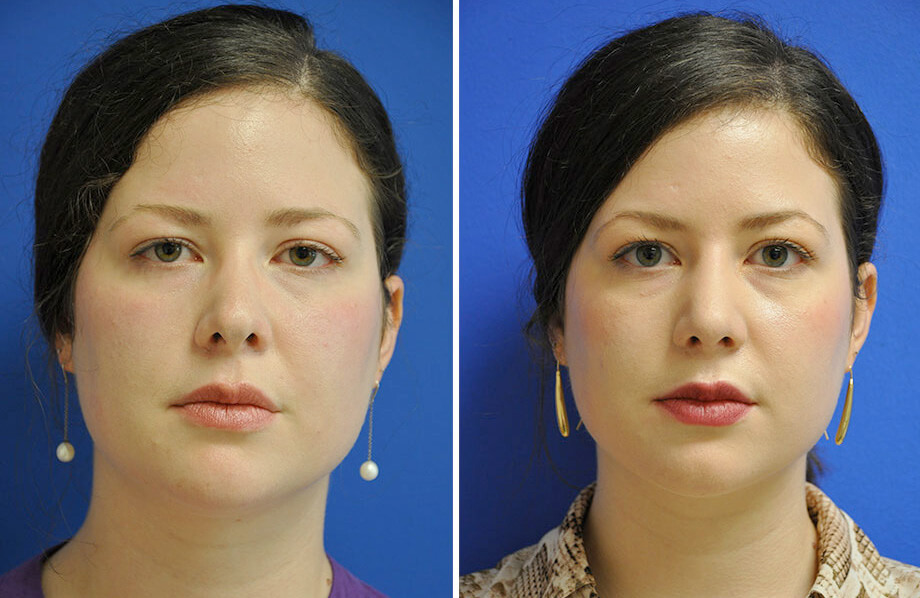
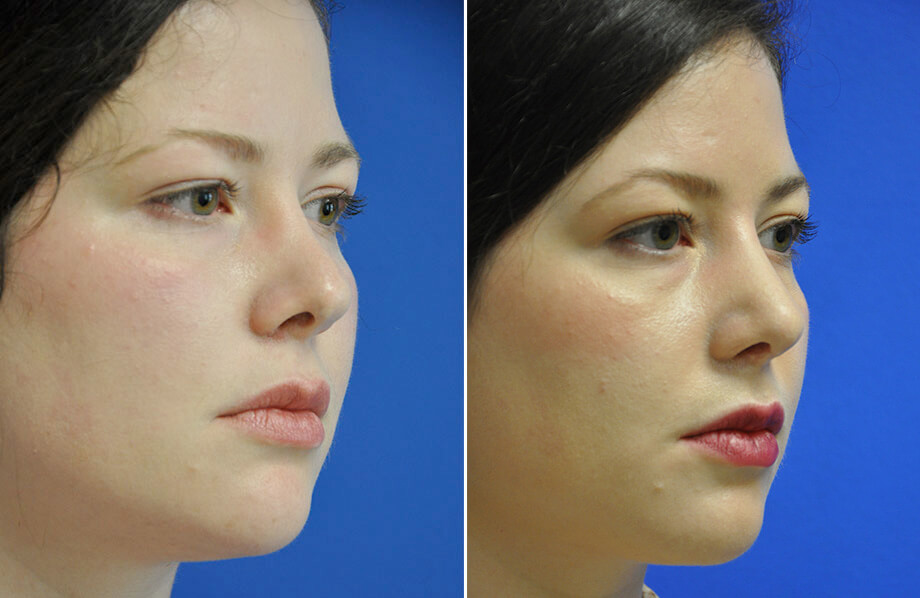
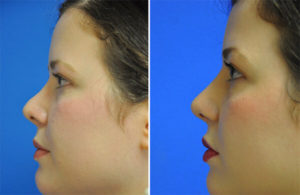
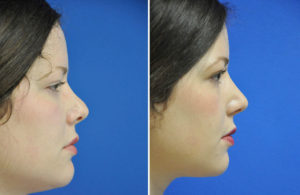
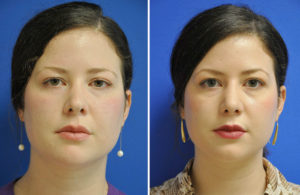
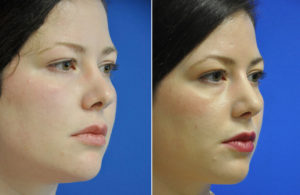
Description:
Description:
Technique: Open Revision / Secondary Rhinoplasty
Graft Types: Bilateral Spreader, Columellar Strut, Sub-Domal, Bilateral Alar Rim
Graft Source: Septal Cartilage
Patient Story:
This patient is in her early Thirties. Five years prior she underwent a “nose job” (in her words) by another Austin Cosmetic Plastic Surgeon under sedation anesthesia to remove a dorsal hump (a “bump” on the bridge). She was not satisfied with her result and identified Dr. Weinfeld as a Plastic Surgeon who has an interest and experience in revision rhinoplasty by doing an internet search. She was an informed patient and stated that she was interested in reducing her supratip deformity (the convexity seen toward the end of her nose on the profile view). She also felt her nasal tip was over rotated (too turned up) and wanted that corrected. She underwent a revision rhinoplasty and due to fact she had not had a septoplasty with her first rhinoplasty she was able to benefit from the use of septal cartilage for the grafts needed to repair her nose. Following her surgery she was very satisfied with the creation of a natural appearing supratip region, the de-rotation of her tip, and the refinement of tip shape. She is now considering undergoing an upper lid blepharoplasty by Dr. Weinfeld.
Revision Rhinoplasty 06
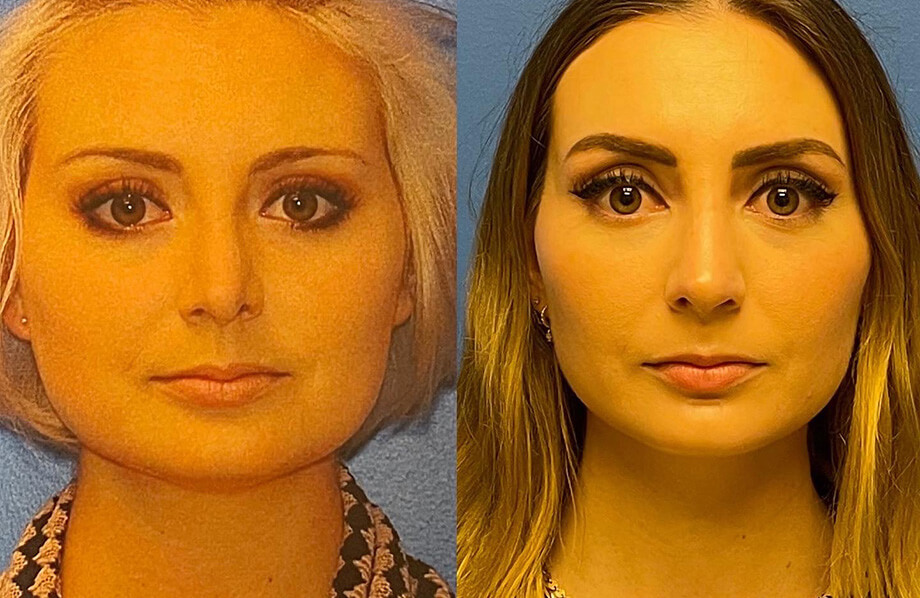
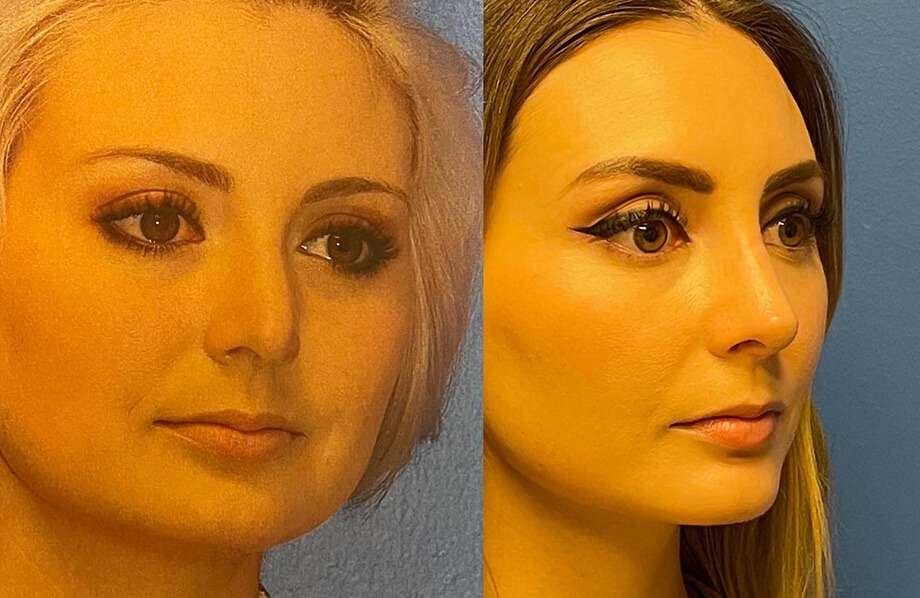
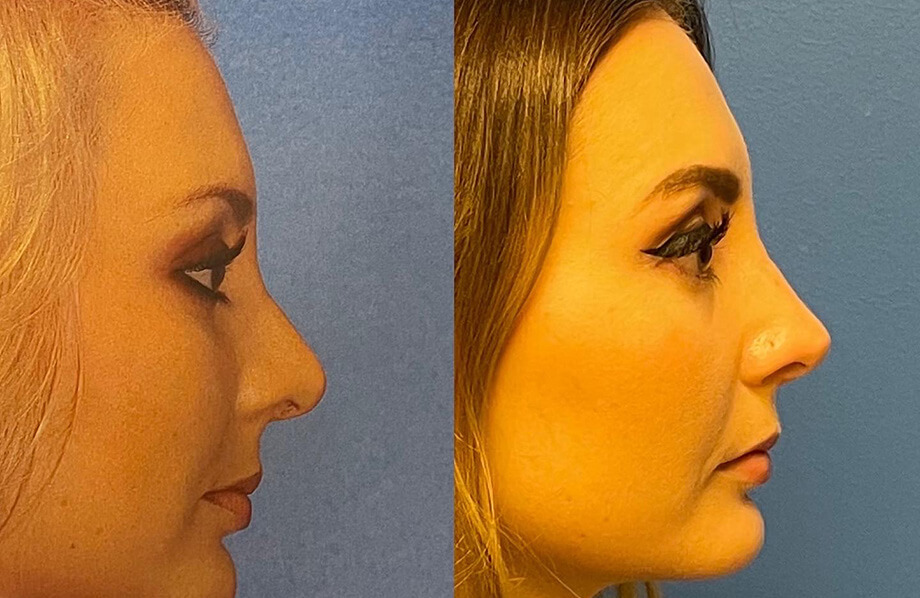
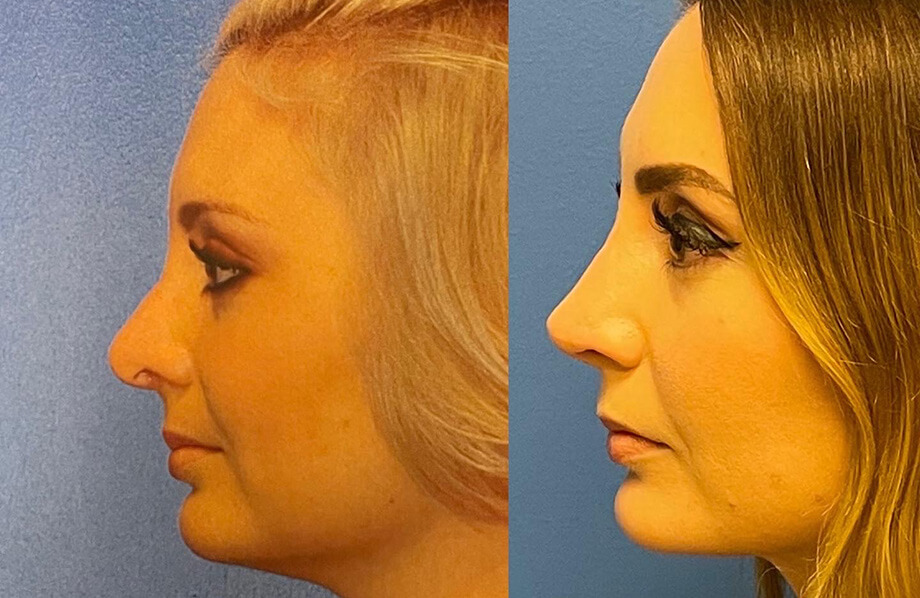
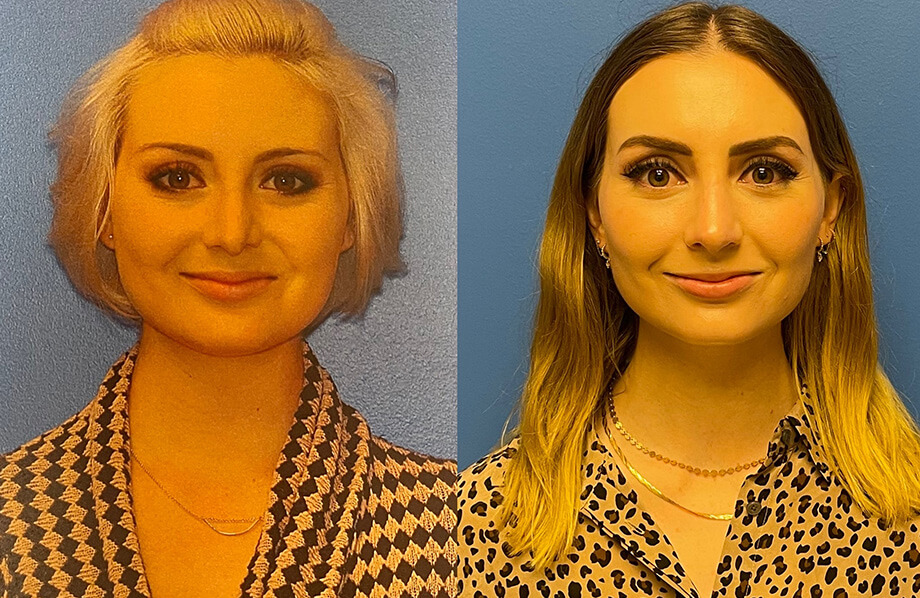
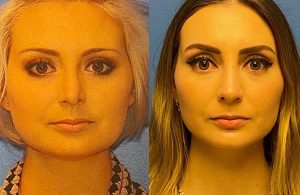
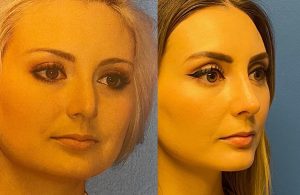
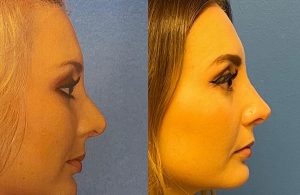
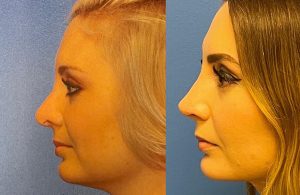
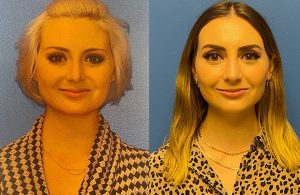
Description:
Description:
Rhinoplasty Revision with Rib Graft, 3 Months
Revision Rhinoplasty 07
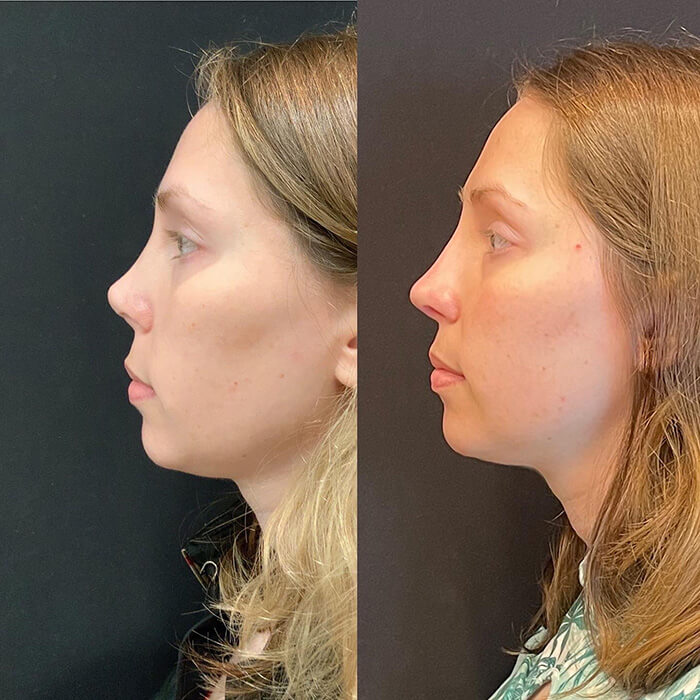
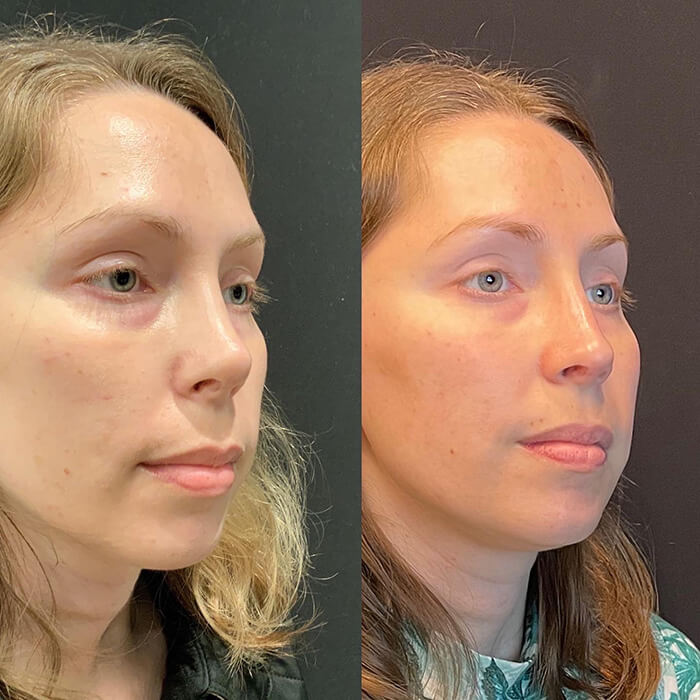
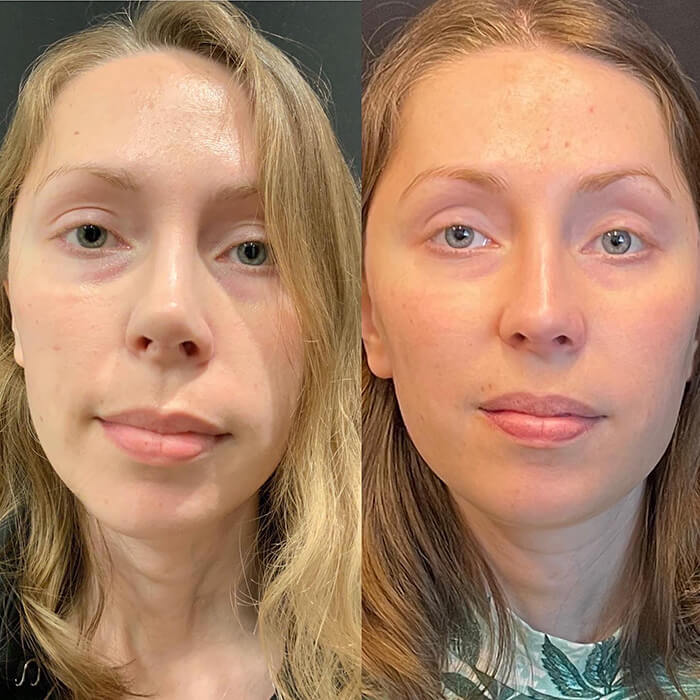
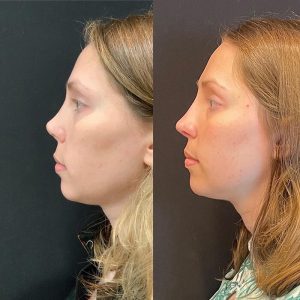
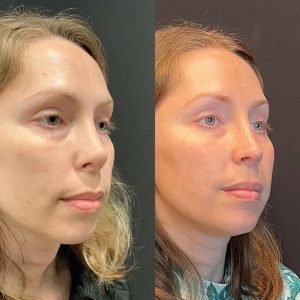
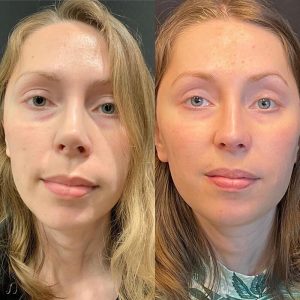
Description:
4 1/2 months after revision rhinoplasty. She had 2 prior surgeries – this was her second revision. Her first 2 surgeries were not done by Dr. Weinfeld. These type of complex revisions are some of the most challenging surgeries in plastic surgery. Revision rhinoplasties almost always require rib graft which was true in this case. Sometimes ear cartilage is required to create additional details. This patient also had pre revision micro fat grafting to the skin of bridge of the nose (dorsum) in order to prepare it for the third surgery by restoring the natural padding which is protective. Revision goals: smooth the bridge, de-rotate the turned-up tip, lengthen the over shortened nose by rebuilding the lower septum to provide better size balance with the rest of the face. At 4 1/2 months after multiple surgeries we know there is a lot of swelling still present so the results will get even better with more time.
Revision Rhinoplasty 8






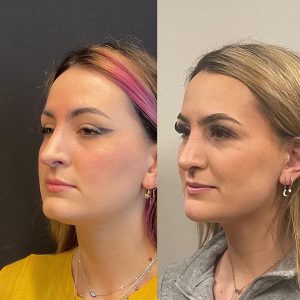
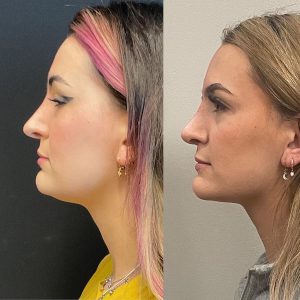
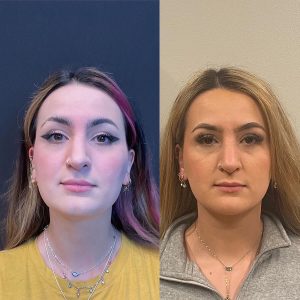
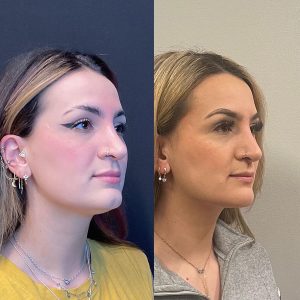

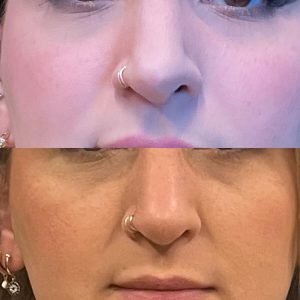
Description:
20 week (short term) follow up for rhinoplasty revision, liposuction and renuvion of the lower face and neck, and burr reduction genioplasty. The nose is still swollen and will be for a while because this is her second surgery, but the improvement in shape is evident. Pay close attention to the more symmetric nostrils and tip shape. The lower face, jaw line, and chin results are impressive even at this early date. Liposuction reduced the fat and renuvion tightened the skin creating a “tighter fit” over the mandible giving wonderful jaw definition. The chin is rounder and more feminine. She looks like she lost 15 or more pounds but tells us she is the same weight.
Get In Touch
Patients respond to Dr. Weinfeld's expertise and caring patient focused approach. If you have any questions about a procedure or are ready to schedule a consultation, please call or fill out the form below.
Office
Phone: 512-559-1376
Office & Surgery Center
Phone: 512-559-1376
This facility is only for cosmetic and non-insurance based procedures. If you seek insurance based treatments or reconstructive procedures, please search for Dr. Weinfeld in his other facility.
*Please verify the location of your appointment.
Connect with us
